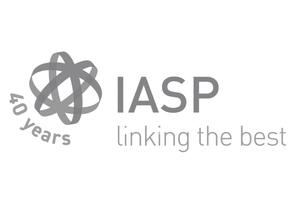22.05.2017
Connected Health Cluster: promotes entrepreneurship and helps make the world a better place
The Connected Health Cluster (CHC) helps Estonian companies expand to new markets, assists in creating new enterprises, and works to establish a favourable environment for health technology companies in Estonia. The cluster facilitates contact among and with Estonian health ecosystem as well as process in creating practical, functioning solutions with sustainable business models.
Külle Tärnov, manager of the CHC, joined the science park team in 2006. Around 2010, when the number of health tech companies in the science park community started to grow, she stepped in to run the field. “I was probably attracted by the fact that this sector is not purely about doing business, but here you also have a chance to make the world a better place. All these services improve – to a greater or lesser extent – the general well-being of people. I felt that healthcare is something close to my heart and here I had the opportunity to get a – so far – small sector to grow and become open for the private solutions,” she recalls.
Tärnov said that the CHC is part of the Tallinn Science Park Tehnopol, established for developing technology-based entrepreneurship in Estonia and focused on ICT, health, and green technologies. “The science park includes a separate campus where on ten hectares there are then buildings housing various technology companies. Their physical proximity and cooperation foster the creation of synergy. We help start-ups in those three fields identify their target groups, understand how to make money, that is, define their business model, and, if needed, find investors. Among other things we provide support to companies that already record a turnover and have clients in Estonia, but would like to reach out to foreign markets. In that case, we help primarily with providing information on and contacts for new markets, preparing a business strategy and tactics, or how to enter a new market successfully,” Tärnov elaborates. The community of Science Park Tehnopol includes and its services are used by more than 180 technology enterprises all over Estonia, a third of which represent the health tech sector.
The cluster connects you with Estonian health innovation players
The CHC was established in the autumn of 2014 with the goal to improve the quality of services provided in the field of healthcare. “It became clear that cooperation with the public sector and providers of healthcare services plays a vital role in this sphere besides communication between companies. Here, one party is not always the buyer and the other the supplier, but often combinations of multiple players emerge. In addition, we need to take into account legislation, rules and standards that ensure the safe provision of services. While we cannot possibly imagine, for example, the banking sector not using IT solutions, in healthcare we still have a long way to go. We could apply the same technologies in healthcare to drive its effectiveness and quality. Healthcare being a highly conservative sector, we simply need considerably more time for changes to take root,” Tärnov says.
The cluster also includes user groups, or hospitals, clinics, doctors, and spas, to ensure that it stands as close as possible to users and that all stakeholders can jointly discuss what kind of solutions are really needed and how to make them ideally adapted to the healthcare sector.
The cluster brings together 50 enterprises, among them start-ups, health tech companies that, as a rule, market services or in some cases products, biotechnology and pharmaceutical companies as well as those specialising in medical technology and supplies. The cluster also cooperates with universities (the University of Tartu, Tallinn University of Technology, and Tallinn University) and technology competence centres as well as user groups and public sector stakeholders.
Joint development projects grant success
“In addition to a number of events, seminars and workshops, the cluster hosts co-development projects that involve two or more enterprises from the cluster and the results of which bring benefits to other parties as well. This means, for example, that initial product testing is done in the context of operational processes in a certain hospital to gain experience that is scalable to other hospitals.
Cluster companies have come up with solutions that are compatible with national development projects, for example, with the e-health information system. The state, for its part, develops health-related infrastructure to prepare it for interfacing with private sector projects. Government agencies don’t need to come up and order all e-health solutions. Instead, private enterprises could provide and sell them on market terms, and according to the demand among clients and depending on the quality of solutions. Such solutions should speak the same language, so to say, and be compatible with each other. Also, common rules must be agreed on. Currently, a health information system interfacing solution for third parties is being developed. This entails making any patient data entered into the health information system available to other parties as well and vice versa on person’s consent. . On the one hand, this must be technologically possible and, on the other hand, we need a clear legal framework and process as to who can forward what kind of data into the centralised system and how the right of access will be granted to other parties,” says Tärnov.
“In addition, we work together with hospitals on innovative solutions. One example is a clinical decision support in psychiatry, another a system for digitalising and streamlining protocols for medical procedures in hospitals,” she adds.
According to Tärnov, the fact that different stakeholders work together, trying to overcome feelings of mistrust and instead, jointly think up new ideas, bears witness to the cluster’s success. For example, guided by the e-health strategy, the cluster develops telehealth services. The working group, including the Estonian Health Insurance Fund, the Ministry of Social Affairs, companies and providers of healthcare services, work together to come up with a solution for seamlessly integrating remote health services into processes and including them in the fund’s pricelist.
A vital link in the chain is the incubation process at Tehnopol. “We are able to provide health and wellness start-ups with full support, helping them to define their business model, understand their clients, reach the best solution, and find funding. We can speed up their actual development process. This is an important link that is not included in all clusters. We share information about events, accelerator programs and competitions in other countries. A number of our enterprises have been chosen for participation in foreign accelerators and have completed the process, won various competitions or have been granted funding for their development to take the first steps and be able to launch their product on the market faster,” Tärnov points out. By the way, the incubator is open for foreign enterprises as well – Estonia offers e-residency and welcomes start-ups who would like to test their services here, including usability testing, and then move on to conquer the world.
A successful example of innovation is the HIV digital competition. “The cluster includes also large pharmaceutical companies who are increasingly interested in digital solutions that would help addressing serious problems. They don’t have competencies in the digital field, but we can come to their support. All stakeholders, including patients and health care providers as well as developers and start-ups, were involved in the HIV digital’s competition,” she gives one example.
Favourable environment and new companies
According to Tärnov, the goal they have been most successful at achieving is creating a conducive environment where specific solutions are already taking shape: “For example, the previously mentioned healthcare system interface for third parties and making it possible to grant third parties access to patient data.”
“As for innovation, for us a key venture is the HIV digital project which assured us that our working process brings actual results. The competition has led to the establishment of two companies that will launch their products on the market in June 2017.
As from March, we are funding two co-development projects, inspired by the shared ideas of doctors and hospitals, and based on cooperation between hospitals and companies. These are our first attempts in the field. We have also created a separate brand, Innovation Clinic, targeted at launching a process, guided by relevant cases, to help doctors or medical professionals determine whether their ideas would be useful to others, whether they can be developed into potential solutions, how to reach out to companies and how all this comes together. In fact, the process works the other way around, too – it provides assistance to companies who think they are able to offer a great solution and need to get in touch with the most appropriate hospital staff to find out whether their project is what doctors actually need. After all, it is not easy at all for a small start-up to meet up with a hospital manager or the right person,” Tärnov explains.
On the road to better export performance
“With regard to export, we have put in a lot of work in terms of representing, establishing ties and marketing. There are several promising enterprises, but working up to high-value sales transactions takes a lot of time. The number of inquiries is steadily growing,” Tärnov says, hoping that the future has excellent export performance in store for the cluster’s partners.
“At the moment companies are mostly interested in expanding to markets in Scandinavia, Germany, and the UK. We can come up with common, specific action plans and companies can use the leverage of our joint efforts to turn themselves into great success stories. We can definitely contribute to boosting the number of health IT companies whose services have export potential,” says Tärnov, well-convinced.

















